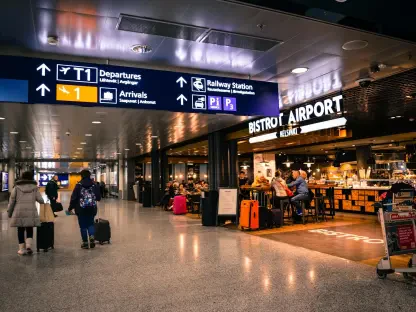FedEx’s ambitious Network 2.0 initiative has captivated attention within the logistics sector due to its sweeping consolidation strategy. By combining its Ground and Express networks, FedEx endeavors to redefine parcel delivery efficiency. Faced with fierce competition from industry rivals such as UPS, the company aims to streamline operations and eliminate route redundancies to retain its leading position. The program has brought substantial changes, including station closures and workforce reductions, making headlines not only for its transformative potential but also for the socio-economic impacts. As of May 31, 100 FedEx stations have been shuttered. This information was highlighted by President and CEO Raj Subramaniam during the June earnings call, emphasizing the necessity of these tough decisions in pursuit of operational excellence.
Streamlining Operations for Enhanced Competitiveness
Understanding FedEx’s Network 2.0 initiative requires examining its core objectives and implications. At the heart of this endeavor lies the goal of reducing operational complexity and boosting delivery efficiency. By consolidating overlapping routes and simplifying logistics, FedEx positions itself to better handle the growing demands of the parcel delivery industry. Central to these efforts is the maintenance of existing transit times, ensuring customers experience no disruptions despite the vast scale of organizational changes. The commitment to uphold delivery speeds represents a promise to both customers and partners, reassuring stakeholders as they navigate the evolved operational landscape. Communication remains key in executing such changes, with FedEx prioritizing transparency through detailed maps and tables outlining facility closures and staff adjustments, helping manage expectations and foster understanding.
Impact on Workforce and Facilities
The implications of Network 2.0 extend beyond operational strategies, significantly affecting employees and physical locations nationwide. The initiative, while aimed at streamlining efficiency, naturally necessitated tough decisions regarding facility closures and workforce reduction. The closure of 100 stations by May 31 marks a pivotal moment in FedEx’s strategic pivot, influencing communities and the company’s workforce. Stakeholders anticipating further changes closely monitor FedEx’s comprehensive reporting on these transitions. While layoffs and closures pose challenges, FedEx remains steadfast in its vision, creatively navigating difficult circumstances. The company’s leadership underscores the importance of efficiency-driven alignment, assuring stakeholders of continued updates related to closures and workforce adjustments, bridging the gap between strategic aims and community impacts.
A Strategic Alignment Toward a Cost-effective Future
FedEx’s Network 2.0 serves as a pivotal step in refining its delivery framework, striving for greater cost-effectiveness and operational excellence in the global logistics arena. The strategy involves aligning operations to minimize wasteful expenditures while boosting efficiency, positioning FedEx to better compete internationally. Network 2.0 is not merely a restructuring; it signifies an adaptable and forward-thinking vision, equipping FedEx to meet the evolving demands of the logistics industry. Transparent communication remains central, offering stakeholders insights and updates throughout the process. Under Subramaniam’s leadership, the initiative reflects FedEx’s commitment to innovation, serving as a model for future improvements. In a shifting parcel delivery landscape, FedEx’s adaptable approach indicates promising growth and development opportunities. Despite challenges such as station closures and workforce adjustments, FedEx’s unwavering focus and transparency have facilitated a smoother transition, underscoring its adaptability and strategic foresight in enhancing global parcel delivery.









